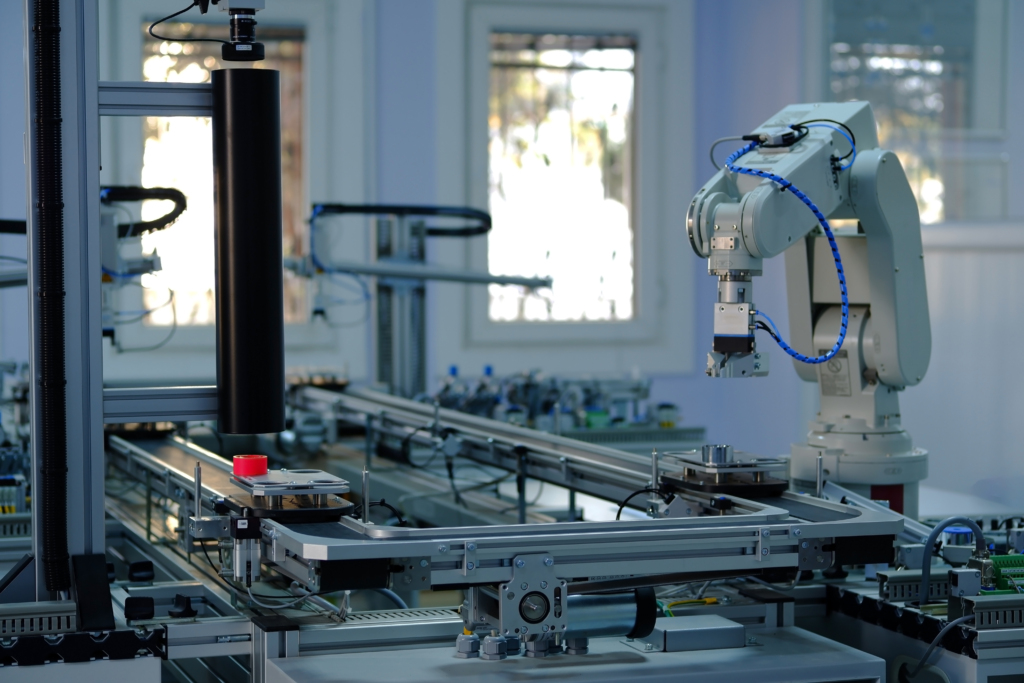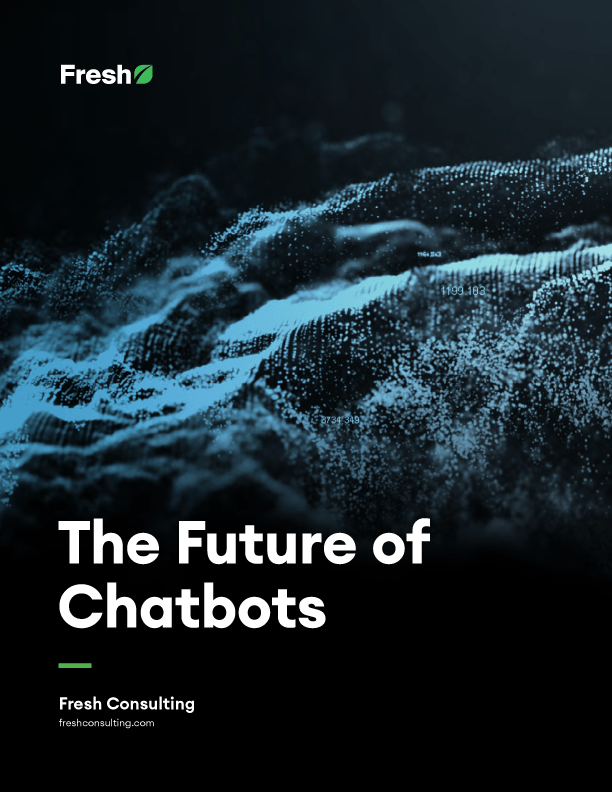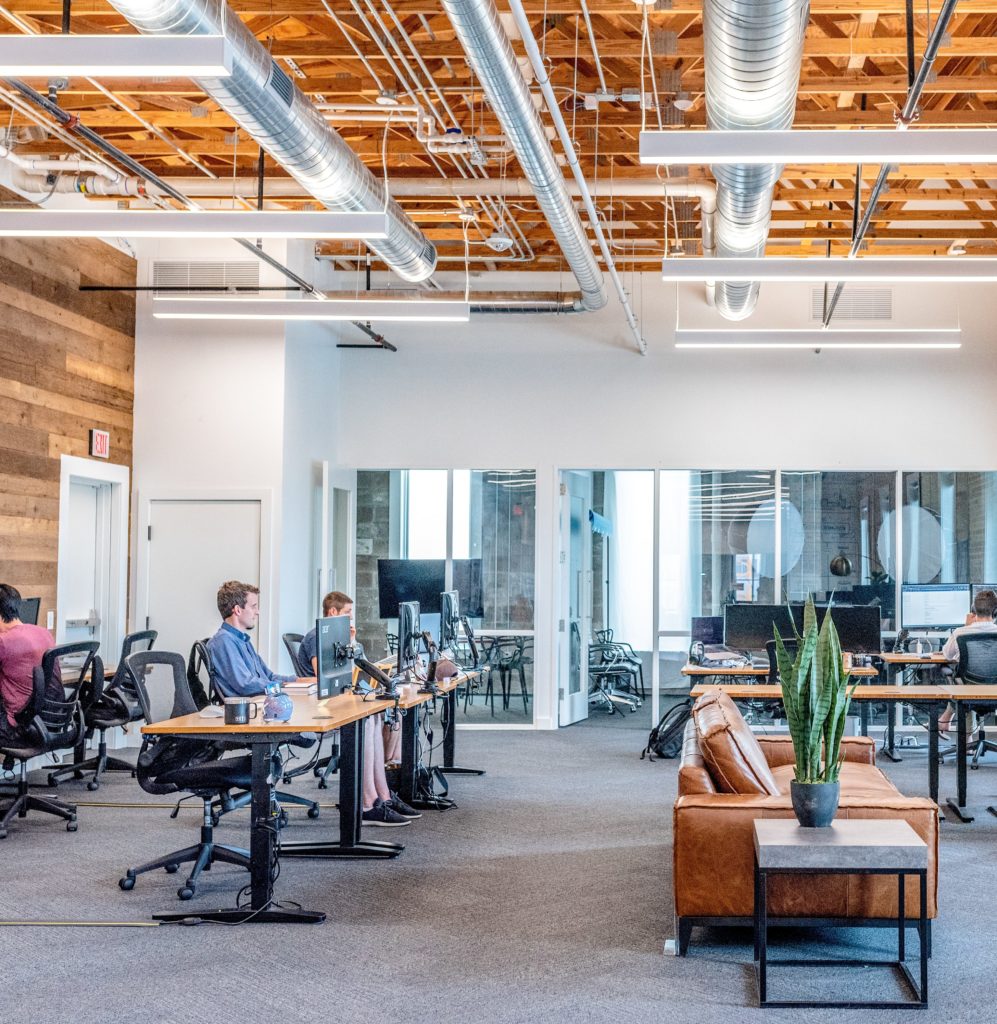Article
The ongoing evolution of industrial automation
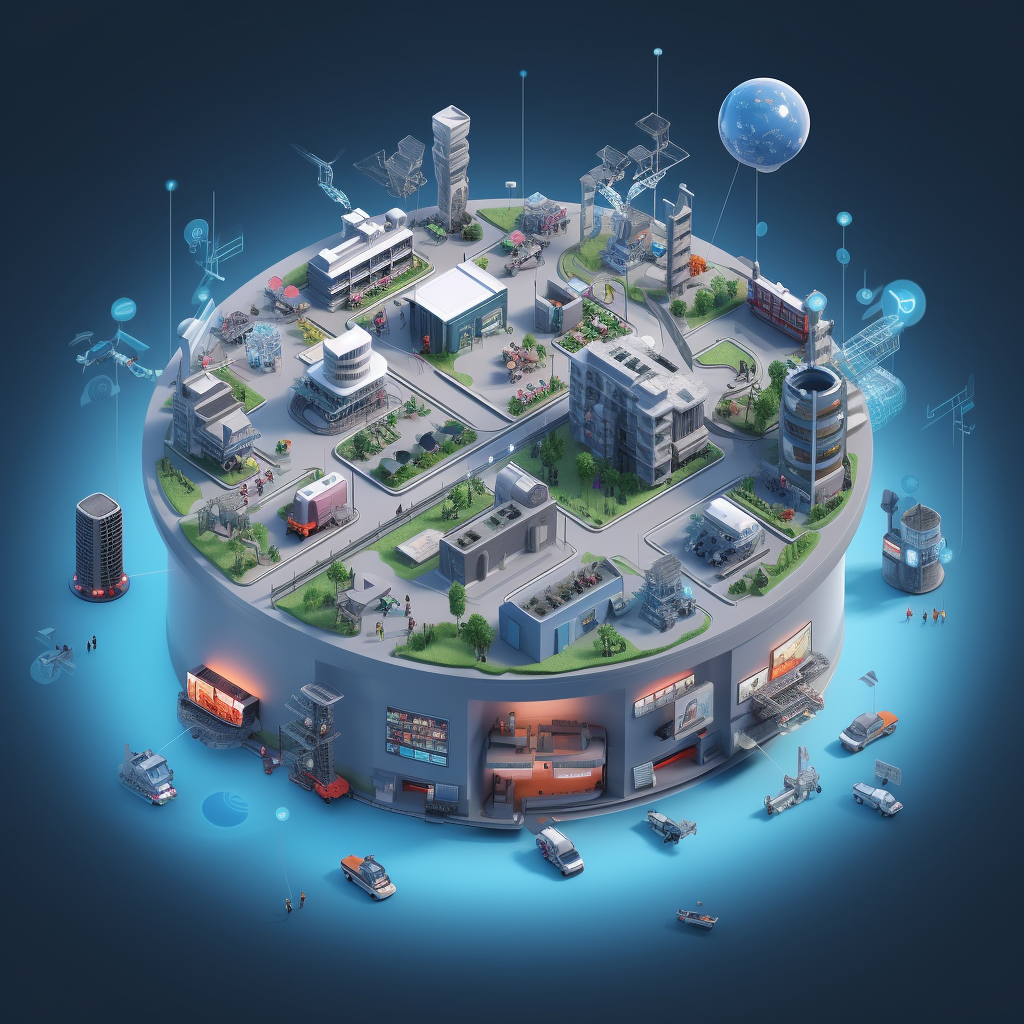
“Industry 4.0,” or 4IR, refers to the rapid scale of technological innovation across various sectors since the 2000s and the transformation it has enabled. Due to the increase in and sophistication of modern technology, 4IR continues to have significant implications for the field of industrial automation.
Statistics show that industry leaders have actively planned for changes. According to a 2019 global report from McKinsey, “68 percent of companies see Industry 4.0 as a top strategic priority today.” Studies conducted by PWC, McKinsey, and Deloitte from 2019 to 2022 illustrate that the trend of embracing Industry 4.0 is continuing:
- With regard to preparing for economic volatility –– “In PwC’s Consumer Intelligence Survey on 4IR, in which 1,800 senior executives were surveyed, 63% agreed that 4IR provides protection against an economic downturn.” (PWC, 2019)
- With regard to putting concrete strategies in place –– Organizations are employing “comprehensive, holistic strategy” for Industry 4.0, including protecting themselves from disruption, attracting talent to build solutions, training and developing their workforce, and utilizing new labor models. (Deloitte, 2020)
- With regard to proactively responding to crises –– “94 percent of respondents told us that Industry 4.0 had helped them to keep their operations running during the [Coronavirus] crisis, and 56 percent said these technologies had been critical to their crisis responses” [ . . . ] “56 percent of respondents that hadn’t implemented Industry 4.0 technologies prior to COVID-19 found themselves constrained in their ability to respond to COVID-19 in the absence of digital technologies to support them.” (McKinsey, 2021)
- With regard to the ROI of adopting innovative technologies –– “Across a wide range of sectors, it is not uncommon to see 30 to 50 percent reductions in machine downtime, 10 to 30 percent increases in throughput, 15 to 30 percent improvements in labor productivity, and 85 percent more accurate forecasting.” (McKinsey, 2022)
The value of creating “smart,” highly-automated factories and integrating innovative technology into workflows is clear, but getting it done isn’t easy. Understanding the basics of Industry 4.0 is an excellent starts.
In this article, we’ll cover:
- A brief history of the four industrial revolutions and how we got to today
- Familiar use cases related to Industry 4.0 (4IR)
- Security challenges that the ongoing paradigm shift presents
- Advice on how to get started––or how to continue advancing your efforts
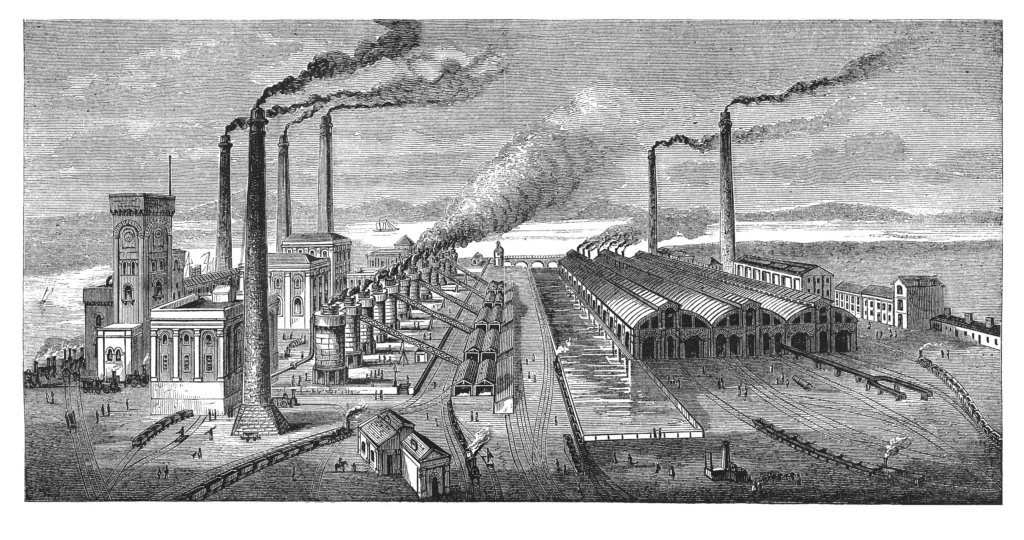
The history of industry and its current state
As human civilization has evolved––and our discovery, adoption, and advancement of new technologies have accompanied that evolution––the nature of our lives and work has changed.
The First Industrial Revolution: 1760-1840
New inventions in this initial period had the primary effect of making production faster and easier, enabling formerly manual laborers to work more efficiently than ever before.
Examples include:
- The steam engine––the machine replaced manual methods of movement (i.e. workers lifting, blacksmiths sculpting, horses pulling, and windmills grinding)
- Automated tools––water frames, spinning mules, cotton gins, and power looms automated elements of the textile production workflow, moving the craft out of homes and into factories
- Transportation and logistics––the advent of railroads and trains fundamentally changed the way resources were distributed and goods were moved; speed of travel was also drastically increased
The Second Industrial Revolution: 1870-1914
Technological advancements in the second industrial revolution included the creation of tools for powering machines (the internal combustion engine), light and power (the creation of means to use electricity more widely), communication (the improvement of the telegraph; the inception of the telephone), and the advent of modern “assembly line” manufacturing processes.
Large-scale production of materials and energy sources in the second industrial revolution set the stage for the digitization of the modern world via the third industrial revolution.
The Third Industrial Revolution: 1960s-early 2000s
“The Digital Revolution” involved transitioning from mechanical and non-computerized technologies to digital ones.
- Early personal computers were developed through the 1970s
- The emergence of early networking and the internet we know today (in the late 80s and early 90s)
- Tools for communication and interaction enabled by the advancements listed above
The Fourth Industrial Revolution: mid-2000s to present
The Fourth Industrial Revolution (which is also known as 4IR, as stated previously) is the age of synthesis and integration: the fusion of physical, digital, and biological tools that have enabled drastic changes in the ways we live and work, in addition to how we develop new technologies that leverage existing technologies.
- Interconnectivity: IoT, RF, firmware engineering
- Automation: AMRs, robotics
- Design: Rapid prototyping, Industrial design
- Development: Test automation, Manufacturing automation
- Interaction XR, AR, VR
- Machine intelligence: Artificial Intelligence (AI), Machine Learning (ML), Generative AI
Are we in the midst of another industrial revolution…5IR?
Industrial Revolution 5.0––or 5IR––some experts posit that we’re in the midst of it already.
But will it be more of a social revolution, rather than a technological one? Thought leaders have a range of perspectives on this question as well. An article published about how the world changed in response to the COVID-19 pandemic by the National Institute of Health termed the next paradigm shift as Society 5.0 (a “super smart society,” with humans at the center), where we use the previous technologies across every sector.
Developments like Web3 and the Metaverse promise to change the structure of society in concrete ways; ChatGPT and other generative AI tools have already shifted the way we create and consume art and media.
All of this continues to play out. Proponents of Society 5.0 suggest that the end result will be human-influenced, which is vital as automation continues its proliferation.
Other thought leaders posit that 5IR will involve “harmonious human-machine collaboration” with regard to retail and services––industry experts featured in episodes of our podcast titled “The Future of Human-Robot Integration” (Apple; Spotify) and “The Future of Retail” (Apple; Spotify) offer a similar perspective.
The story of industrial revolution is guided by a common theme
Regardless of whether a fifth revolution is formally designated, synthesis, integration, and fusion define the current phase, which is ongoing.
Synthesis, integration, and fusion have defined the interplay between previous industrial revolutions as well.
We live in a world with an always-growing technological ecosystem, one where individual tools and technologies interact with others in numerous (sometimes unexpected) ways, yielding exciting results and opportunities.
One of the most interesting things about the various industrial revolutions is their overlap. The internal combustion engine still exists despite being created in the 19th century. Without it, the automotive industry wouldn’t exist in its current state. But as the world becomes more collectively aware of the importance of sustainability and environmental preservation, investment in a zero-emission future is well under way.
From steam to gasoline, from hybrid to electric, the life of the engine has been one of ongoing evolution, each iteration building on the foundation set by its predecessor.
Beyond engines, the history of industry itself has been a story of synthesis, integration, and fusion. In the 21st century, that trend has become drastically accelerated.
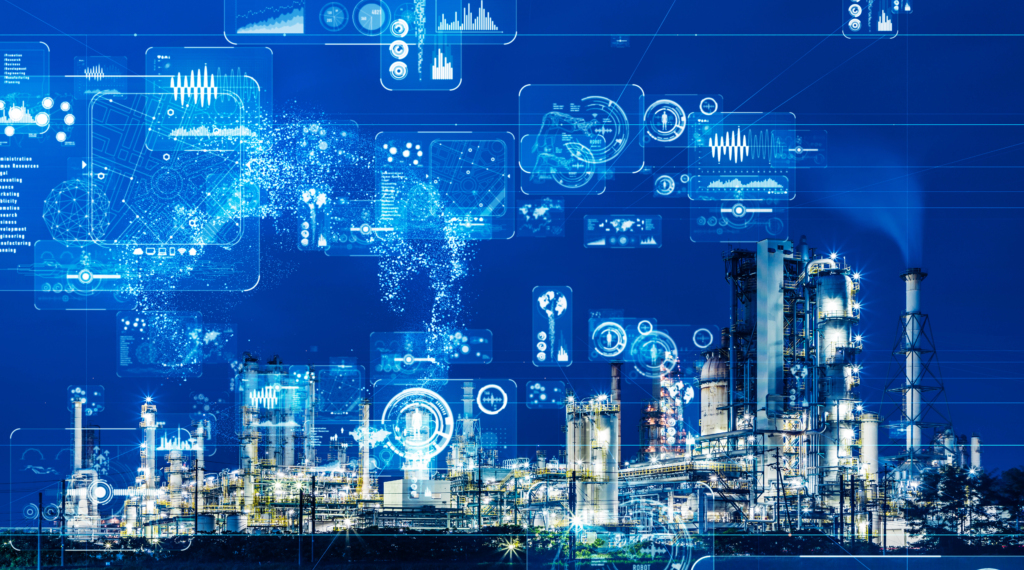
Familiar use cases related to Industry 4.0 (4IR)
Synthesis, integration, and fusion––what do they look like in practice? Let’s dive into several examples.
AI and machine learning automation
For industrial sectors, Artificial intelligence (AI) and machine learning (ML) have significant implications for labor productivity improvements and worker augmentation.
PWC’s study cites several use cases, with enhanced monitoring and auto-correction having the potential for the highest value:
“Self-learning monitoring makes the manufacturing process more predictable and controllable, reducing costly delays, defects or deviation from product specifications. There is a huge amount of data available right through the manufacturing process, which allows for intelligent monitoring.”
When we talk about “worker augmentation” at Fresh, the focus is collaboration and support, not replacement––a commonly cited fear related to the proliferation of AI and ML.
AI and ML do have the unprecedented ability to gather, process, and synthesize massive quantities of data to help streamline workflows, identify problems, and provide an ongoing source of intelligence, but the focus at Fresh is worker empowerment within optimized workspaces. The ability of AI and ML to learn and adapt over time also provides the opportunity to personalize models to a unique industrial use case, bringing additional value to individual businesses and their workforces.
Additional case studies for AI and ML are listed below.
ML algorithms for operational intelligence: Identifying pinch points in the shipping process, predicting roadblocks, and optimizing schedules
McKinsey’s article Toward Smart Production explores the use case of Wayfair, a direct-to-consumer retailer of home goods:
“During the COVID-19 crisis, as consumer demand changed rapidly across regions, the company has been able to optimize container ship logistics, continually adjusting what goods were sent to which ports. With shipping surcharges becoming more prevalent, Wayfair saved about 7.5 percent in inbound logistics costs as a result.”
In a Chain Storage interview with Nitin Kapoor, VP of supply chain technology for Wayfair, Kapoor elaborated on how AI and ML are optimizing supply chain and forecasting:
“The infusion of artificial intelligence (AI) into the supply chain began with our demand forecasting models. We needed the ability to predict exactly what assortment would be needed, the quantity requirement along with a breakdown into the various geographic areas where we do business.”
ML and deep learning paired with machine vision: Reducing downtime, predicting workflow maintenance, and providing insights on preventative measures
Amgen, a leading biotech drug maker, knows the importance of rigorous quality control in the field of therapeutics––specifically, in the creation of effective rubber stoppers for syringes without “air bubbles”:
“The problem with air bubbles [in syringes], especially in highly viscous parenteral (injectable) solutions, is that they can’t be easily or quickly eliminated or differentiated from unwanted particles that represent product defects.”
As with any product development industry, optimized manufacturing is vital for ROI:
“In an industry first, the biotech leader has equipped — and validated — an inspection system with artificial intelligence (AI) to boost particle detection 70%, cut false rejects 60%, and differentiate pesky bubbles from unacceptable contaminants in syringes.”
Cutting the time of QA inspection––and increasing the accuracy––has the potential to get solutions to providers faster, with safer outcomes.
Working with industry partners to make design and manufacturing more sustainable: Optimizing data centers for (much needed) energy efficiency
As reiterated throughout this post, effective AI and ML models require tons of data. Research from the US Department of Energy indicates just how much:
“Data centers are one of the most energy-intensive building types, consuming 10 to 50 times the energy per floor space of a typical commercial office building. Collectively, these spaces account for approximately 2% of the total U.S. electricity use, and as our country’s use of information technology grows, data center and server energy use is expected to grow too.”
MIT, in conjunction with five industry leaders, launched the MIT Hardware Program because “while AI software is growing quickly — with researchers developing more complicated algorithms pulling from larger data sets — hardware isn’t keeping up.”
The goal is simple: “Anticipating a moment when advanced systems could suck up power at an unsustainable rate [the group seeks to] examine each step of designing and manufacturing the hardware behind AI-powered technologies.”
MIT’s authors elaborate further on the topic:
“[Jesus del Alamo] used an example of self-driving electric cars, where AI technology that directs the car to turn or stop uses up a chunk of the battery. Researching how to develop AI hardware to save energy requires looking at each stage of producing a product, del Alamo said, which is why it’s critical for MIT researchers to partner with industry.”
Using AI/ML to power robots: improving efficiencies via flexible, customized automation
Fresh works extensively in the robotics field, building platforms like Harmony to integrate robotic ecosystems and automate industrial sites.
In a report from McKinsey, their researchers cite four additional use cases for robots configured to perform autonomous tasks via AI and ML:
- Deploying autonomous operations with robots and cobots
- Scale up operations evenly and quickly by leveraging common configurations
- Flexibly adapting operations to new requirements via re-programmability
- Segregate product and service creation from delivery via diverse fleets
The possibilities are endless. Understanding this, at Fresh, we combine AI and machine learning with our skills in robotics, engineering, and software to produce industrial automation solutions tailored to individual businesses.
Synthesis, integration, and fusion––the end result is an approach to industrial automation that delivers value.
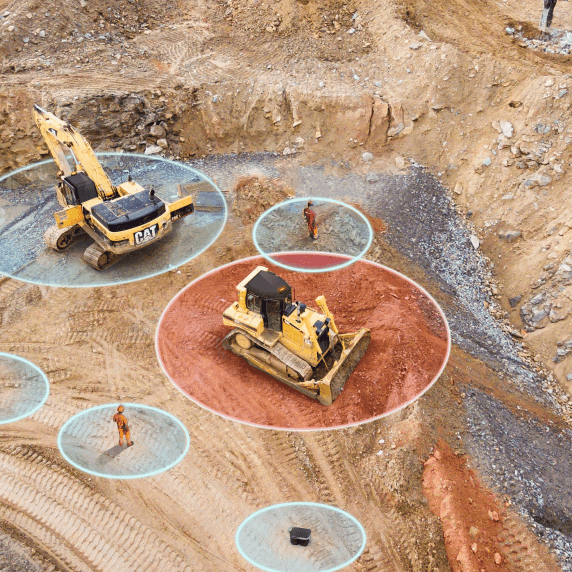
Firmware and embedded systems
Firmware––the bridge between hardware and software––is essential in Industry 4.0.
Today’s embedded systems leverage system-on-chip (SoC) technology (“a microchip with all the necessary electronic circuits and parts for a given system,on a single integrated circuit, or IC”) and bluetooth low energy radios (“for very low power operations”), which serve to connect industrial spaces more efficient, minimalistic way.
Here are four key use cases of firmware and embedded systems in industrial automation:
Enabling smart devices
Firmware, as low-level software, has the potential to provide robust control, monitoring, and data manipulation in industrial systems. It is integral in the functioning of IoT devices, which are a core part of Industry 4.0.
From simple sensors to complex robots or manufacturing systems, all of these devices rely on firmware to operate effectively and carry out their tasks.
Interconnectivity and communication
Firmware enables IoT and IIoT (Industrial IoT) devices to communicate with each other and with centralized control systems using various protocols. It plays a critical role in establishing and managing network connections, ensuring that devices can share data and work together as part of a larger system.
Fresh’s RF Engineering Lab gives us the capability to design, analyze, and simulate systems before you integrate them into your facility, further optimizing the manufacturing process.
Automated, adaptable upgrades
Firmware updates are a crucial aspect of maintaining and improving device performance over time. In Industry 4.0, the ability to upgrade firmware remotely allows devices to adapt to new requirements, improve efficiency, fix bugs, and enhance security features.
For 24-7, always-online production––a hallmark of industrial automation––this functionality is essential.
Real-time monitoring and control
Firmware enables real-time monitoring and control of industrial devices and systems, which is a key aspect of Industry 4.0. This can help to optimize processes, prevent downtime, and increase overall productivity.
It also ties to worker empowerment––operators and systems specialists with more information at their disposal distributed in real-time by the automated systems themselves.
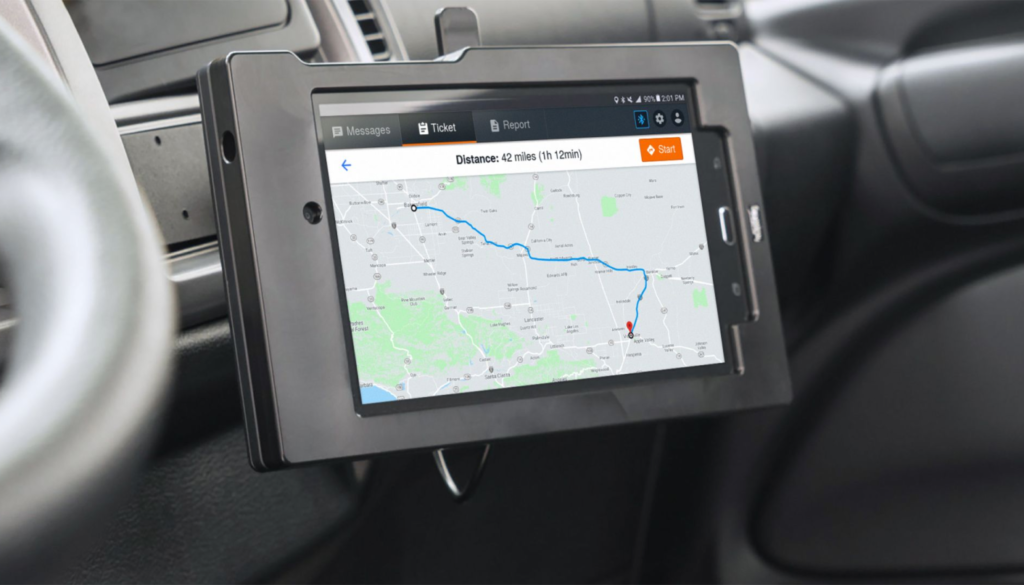
Strategy and logistics for optimal performance
The advances in Industry 4.0 significantly affect and improve strategy and logistics in various industrial sectors. The following five are prime examples of the use case and value.
Real-time data and analytics
Via IoT systems and connected devices, industrial companies can collect real-time data at every touchpoint in the production and supply chain. Obtaining these insights––and automating the process––gives organizations the ability to make informed decisions, predict demand, optimize their supply, and reduce unnecessary resource spending.
Improved efficiency and productivity
As stated above, automation and robotics––powered by advanced AI and ML systems––can perform dull, dirty, and dangerous tasks and re-position human workforces to do higher-value, more engaging work. Not only is professional quality of life improved, but for organizations, increased productivity, reduced errors, and more optimal workforce assignments lead to tangible benefits.
Supply chain visibility and optimization
The technologies mentioned throughout this post give companies greater visibility into their supply chain––once again, in real-time. Approaches to planning, tracking, and responding are all improved, ensuring that supply chains remain intact and improve in response to fluctuations in a given market.
Customization and flexibility
Greater flexibility in manufacturing processes is also possible, enabling customization on a greater scale. Purpose-built solutions can still be crafted, but with componentry that allows for adaptation of production lines. The outcome is meeting demand without downtime or the cost of building something entirely new.
Sustainability
Sustainability is important both for the sole purpose of doing good in the world, but also, of maintaining a positive brand image and opening up the possibility to work with organizations that demand sustainable processes.
Industry 4.0 technologies can also contribute to sustainability. Improved efficiency often leads to reduced energy usage. In addition, better data can lead to more effective resource usage, and AI can be used to optimize processes for sustainability goals.
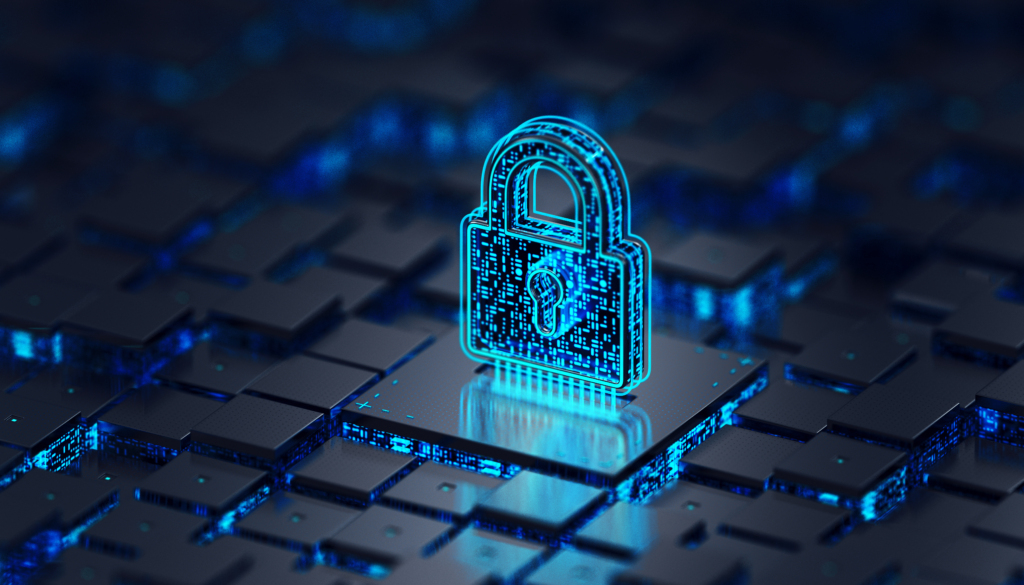
The security challenge that Industry 4.0 (and its ongoing evolution) presents
Industrial automation requires extensive amounts of data and deep, integrated layers of technology. As IoT devices, cloud integrations, embedded systems, and data pipelines multiply, so does your threat landscape. As a result, cybersecurity and data management must be front-of-mind requirements for any company in the industrial automation space.
Examples from the energy, mining, and materials industries illustrate just how much of a challenge security is:
“Whether they generate or distribute power, or extract or refine oil, gas, or minerals, heavy industrial companies comprise critical infrastructure for the global economy. As a result, they are attractive targets for cyber crimes. [ . . . ] By 2018 nearly 60 percent of relevant surveyed organizations had experienced a breach in their industrial control (ICS) or supervisory control and data-acquisition (SCADA) systems.”
Cybersecurity measures have advanced in the past five years, but the systems they protect have become increasingly complicated as well, creating new challenges.
IoT systems are also subjected to security threats, and stakeholders across organizations realize the danger. According to an IBM study, in regard to the security of Iot systems, “36 percent of executives surveyed say securing an IoT platform and its devices is a top challenge for their organizations. An IBV benchmarking study of 700 industrial and utilities IT and OT leaders found that devices and sensors, followed by IoT platforms, are the most vulnerable parts of IoT deployments.”
Here are six challenges organizations must think through, in addition to two opportunities available to combat security threats proactively.
Challenge #1: Increased Complexity, Increased Cybersecurity Risk
With the rise of Industry 4.0, the number of connected devices and systems has exponentially increased, creating more potential for cyberattacks. Industrial Control Systems (ICS) and Operational Technology (OT) environments are typically connected to larger IT networks, posing threats to an organization’s larger technological infrastructure.
Challenge #2: The Need for Robust Data Protection and Privacy
The large volumes of data generated and collected by Industry 4.0 technologies raise significant concerns about data protection and privacy. Sensitive information, such as proprietary data or personally identifiable information (PII), needs to be adequately protected. Additionally, adherence to data protection regulations such as GDPR in Europe is critical.
Additional data vulnerabilities include:
- Cloud security––the policies and controls an organization uses to address internal and external threats to their cloud infrastructure
- Insider threats––individuals within an organization who have access to sensitive information and pose the potential for harm
- Ransomware––malware (“malicious software”) that harms computers, software systems, and data respositories
Methods for proactively addressing security threats, like “zero trust” and IBM’s tools for threat detection, are vital to consider as a means of handling the scale of modern cybersecurity risk.
Challenge #3: Ensuring Data Integrity
Protecting data is vital; so is ensuring the integrity of data itself (accuracy and consistency over its life-cycle). Making reliable business decisions and maintaining efficient operations is vital to avoid data manipulation, a prominent security concern inherent to Industry 4.0.
Challenge #4: Building Structures for Secure Data Transmission
Data pipelines, sharing information between IoT devices, also pose risk. Networks can either be cloud-based or “on-prem” (on premises), but in either case transmission of data is required, which exposes the data to potential interception. Protocols for secure data transmission are vital to create and implement.
Challenge #5: Addressing Device Security
IoT devices can be vulnerable to physical tampering or hacking. Security measures at the “device level” are required. Examples include hardware-based security features, regular firmware updates, and secure boot mechanisms.
Challenge #5: Understanding and Documenting Supply Chain Security
Supply chains have become more streamlined via Industry 4.0, but also, more complex and difficult to secure. Understanding and documenting all components in a supply chain, including third-party software and hardware, is vital.
Opportunity #1: Security by Design
Given the increased risk inherent to modern technological infrastructure, adopting a “security by design” helps, especially when developing and deploying sophisticated Industry 4.0 technologies. “Security by design” (also known as security-by-design and -default) refers to integrating security at every stage of the development and deployment process of a given technology, ensuring that once the device or system is up and running, it’s equipped to handle cybersecurity threats.
Opportunity #2: Improved Security through AI
AI for security and machine learning for security techniques can be used to enhance cybersecurity––and even deal with the risk associated with AI and ML itself. These measure help in three ways:
- Predicting and detecting behavioral anomalies
- Proactively identifying potential threats
- Automating security incident response
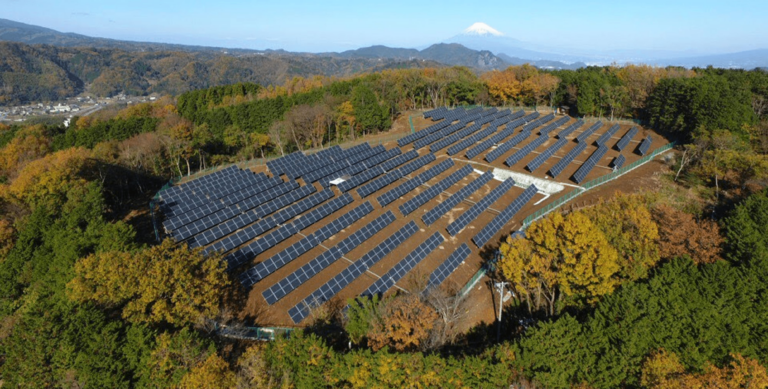
Where Fresh can assist with Industry 4.0 efforts
As an end-to-end innovation consultancy, we provide value wherever organizations need it. We can join your team to move a software solution to market or design, develop, and build an entire robotic assembly line. Our ability to be specialized and broad, and customize our approach for each individual client, allows us to deliver value in any industry.
One of our key focuses is industrial automation. Here are three ways we can deliver value to clients in need of assistance.
Supplementary engineering services for industrial automation
Under the industrial automation and 4IR umbrella, there’s an extensive range of business cases. Given our range of engineering specializations, we can assist anywhere in the system development life cycle.
Software and design capabilities to aid digital transformation
Having the physical infrastructure to support industrial automation is essential, but many organizations also need a measure of transformation, be it digital transformation or their general strategic approach.
According to a McKinsey study, 70% of transformations fail, indicating the importance of strategy. To address this challenge, we offer skilled teams with specialties including:
- Design thinking strategy
- Innovation sprints
- Innovation strategy
- Innovation as a Service
- Product innovation consulting
- Product strategy
- Strategy leadership summits
The goal is to equip organizations with what they need to win in every aspect of their transformation.
A consultative approach to design, development, and engineering
To realize value in the industrial automation space, deep investigation is required––having a third-party that’s able to dig deeper is effective:
- Where are your opportunities? Which workflows should you automate first?
- How will you deploy industrial automation technologies with your existing system?
- How will you maintain new technologies as they continue to scale?
- How do you align opportunities with your current digital readiness and existing IT architecture?
- What is your maintenance plan for your industrial automation?
- How will you train staff to be effective in an automated ecosystem?
Finding a partner who helps guide you through the industrial automation process is vital.
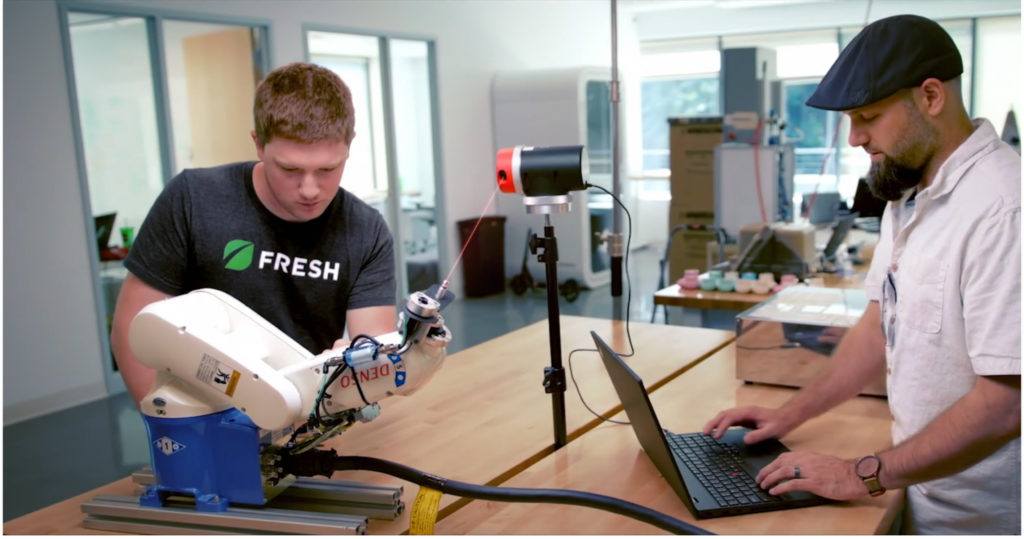
Ready to build? Need more information? Let’s connect.
At Fresh, we help companies address industrial automation at scale with the right strategy, technological prowess, and capability to implement. Automation should empower employees, outmaneuver disruption, and strengthen relationships with vendors, suppliers, and customers, and doing so requires a strategic, measured approach.
If you need assistance in this area––or simply want to learn more about the value automation could hold for your business––please reach out to our team!




